
How to Use ESP32 Dev Kit C V2 (38 Pins): Examples, Pinouts, and Specs
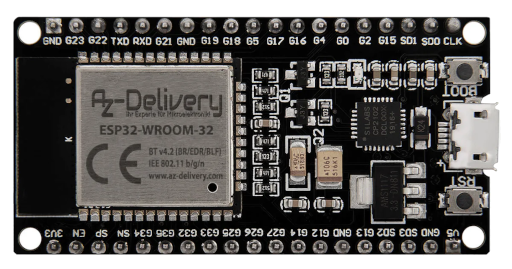
 Design with ESP32 Dev Kit C V2 (38 Pins) in Cirkit Designer
Design with ESP32 Dev Kit C V2 (38 Pins) in Cirkit DesignerIntroduction
The ESP32 Dev Kit C V2 is a powerful and versatile development board manufactured by AZ-Delivery. It is based on the ESP32 chip, which integrates Wi-Fi and Bluetooth capabilities, making it ideal for Internet of Things (IoT) applications, smart devices, and rapid prototyping. With 38 GPIO pins, the board offers extensive connectivity options for sensors, actuators, and other peripherals.
Explore Projects Built with ESP32 Dev Kit C V2 (38 Pins)
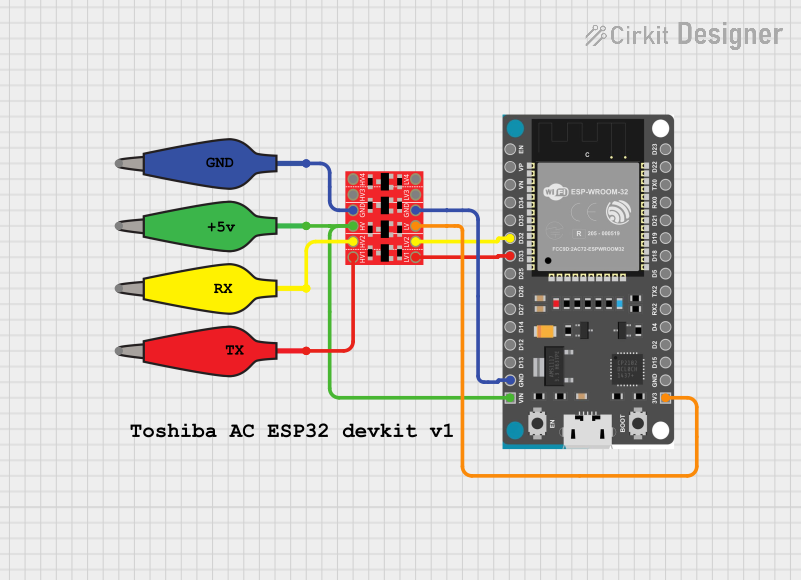
 Open Project in Cirkit Designer
Open Project in Cirkit Designer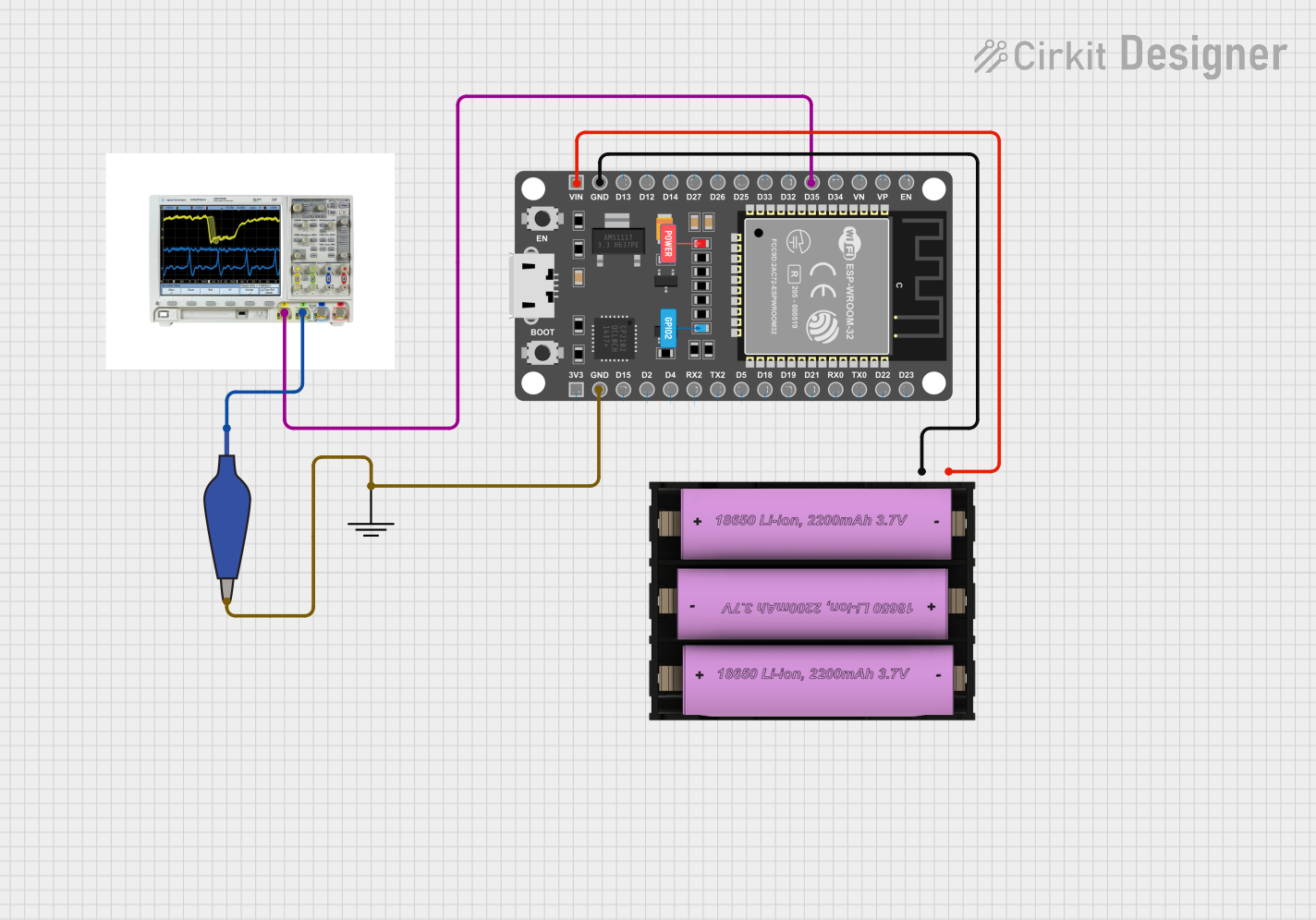
 Open Project in Cirkit Designer
Open Project in Cirkit Designer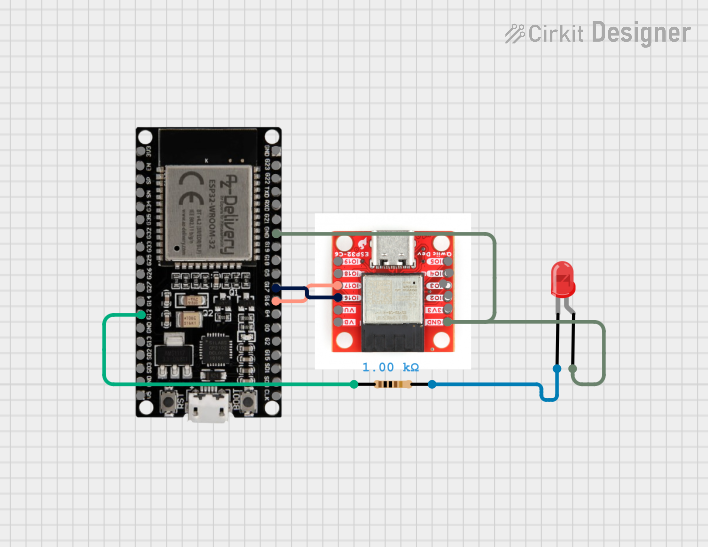
 Open Project in Cirkit Designer
Open Project in Cirkit Designer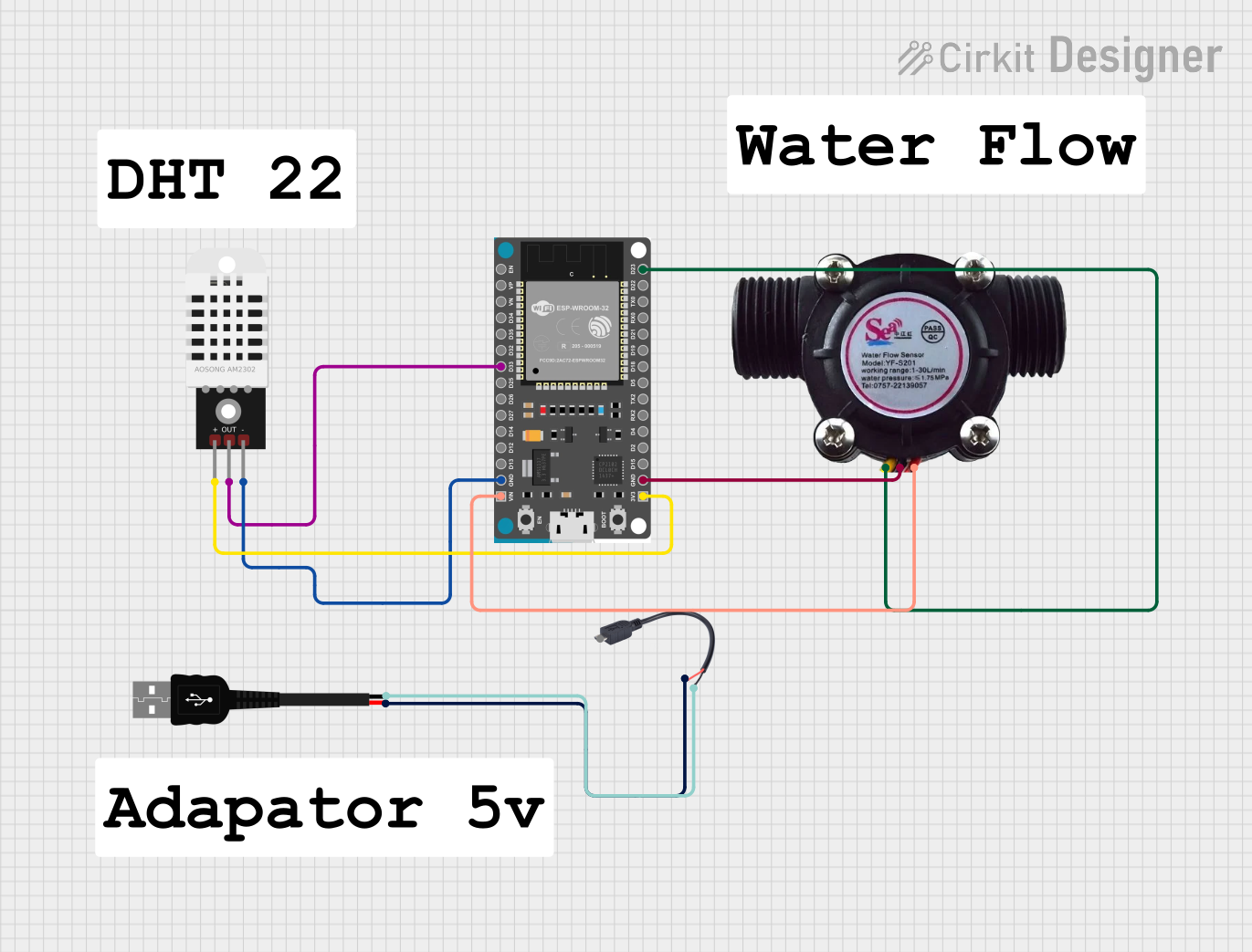
 Open Project in Cirkit Designer
Open Project in Cirkit DesignerExplore Projects Built with ESP32 Dev Kit C V2 (38 Pins)

 Open Project in Cirkit Designer
Open Project in Cirkit Designer
 Open Project in Cirkit Designer
Open Project in Cirkit Designer
 Open Project in Cirkit Designer
Open Project in Cirkit Designer
 Open Project in Cirkit Designer
Open Project in Cirkit DesignerCommon Applications and Use Cases
- IoT devices and smart home automation
- Wireless sensor networks
- Wearable technology
- Robotics and control systems
- Prototyping and educational projects
Technical Specifications
The following table outlines the key technical details of the ESP32 Dev Kit C V2:
| Parameter | Value |
|---|---|
| Microcontroller | ESP32-D0WDQ6 (dual-core Xtensa® 32-bit LX6 microprocessor) |
| Clock Speed | Up to 240 MHz |
| Flash Memory | 4 MB (SPI Flash) |
| SRAM | 520 KB |
| Wireless Connectivity | Wi-Fi 802.11 b/g/n, Bluetooth v4.2 + BLE |
| Operating Voltage | 3.3V |
| Input Voltage (VIN) | 5V (via USB or external power supply) |
| GPIO Pins | 38 (including ADC, DAC, PWM, I2C, SPI, UART) |
| ADC Channels | 18 (12-bit resolution) |
| DAC Channels | 2 (8-bit resolution) |
| Communication Protocols | UART, SPI, I2C, I2S, CAN, PWM |
| Power Consumption | Ultra-low power consumption in deep sleep mode (~10 µA) |
| Dimensions | 51 mm x 25.4 mm |
Pin Configuration and Descriptions
The ESP32 Dev Kit C V2 has 38 pins, each with specific functions. Below is a summary of the pin configuration:
| Pin Name | Function |
|---|---|
| VIN | Input power (5V) |
| GND | Ground |
| 3V3 | 3.3V output |
| EN | Enable pin (active high, used to reset the chip) |
| IO0 | GPIO0 (used for boot mode selection) |
| IO2 | GPIO2 (supports ADC, PWM, and more) |
| IO4 | GPIO4 (supports ADC, PWM, and more) |
| IO12 | GPIO12 (supports ADC, PWM, and more) |
| IO13 | GPIO13 (supports ADC, PWM, and more) |
| IO14 | GPIO14 (supports ADC, PWM, and more) |
| IO15 | GPIO15 (supports ADC, PWM, and more) |
| IO16 | GPIO16 (supports ADC, PWM, and more) |
| IO17 | GPIO17 (supports ADC, PWM, and more) |
| IO18 | GPIO18 (SPI SCK, supports ADC, PWM, and more) |
| IO19 | GPIO19 (SPI MISO, supports ADC, PWM, and more) |
| IO21 | GPIO21 (I2C SDA, supports ADC, PWM, and more) |
| IO22 | GPIO22 (I2C SCL, supports ADC, PWM, and more) |
| IO23 | GPIO23 (SPI MOSI, supports ADC, PWM, and more) |
| IO25 | GPIO25 (DAC1, supports ADC, PWM, and more) |
| IO26 | GPIO26 (DAC2, supports ADC, PWM, and more) |
| IO27 | GPIO27 (supports ADC, PWM, and more) |
| IO32 | GPIO32 (ADC1, supports ADC, PWM, and more) |
| IO33 | GPIO33 (ADC1, supports ADC, PWM, and more) |
| IO34 | GPIO34 (ADC1, input only) |
| IO35 | GPIO35 (ADC1, input only) |
| IO36 | GPIO36 (ADC1, input only) |
| IO39 | GPIO39 (ADC1, input only) |
Note: Some pins have multiple functions. Refer to the ESP32 datasheet for advanced configurations.
Usage Instructions
How to Use the ESP32 Dev Kit C V2 in a Circuit
Powering the Board:
- Connect the board to a computer or USB power supply using a micro-USB cable.
- Alternatively, supply 5V to the VIN pin and connect GND to ground.
Programming the Board:
- Install the Arduino IDE and add the ESP32 board support package.
- Select the correct board (
ESP32 Dev Module) and COM port in the Arduino IDE. - Write or upload your code to the board.
Connecting Peripherals:
- Use the GPIO pins to connect sensors, actuators, or other devices.
- Ensure the voltage levels of connected devices are compatible with the ESP32 (3.3V logic).
Important Considerations and Best Practices
- Voltage Levels: The ESP32 operates at 3.3V logic. Avoid connecting 5V signals directly to GPIO pins.
- Boot Mode: GPIO0 must be pulled low during boot to enter programming mode.
- Power Supply: Use a stable power source to avoid unexpected resets or malfunctions.
- Deep Sleep Mode: Use deep sleep mode to conserve power in battery-powered applications.
Example Code for Arduino UNO Integration
The following example demonstrates how to blink an LED connected to GPIO2:
// Define the GPIO pin for the LED
#define LED_PIN 2
void setup() {
// Set the LED pin as an output
pinMode(LED_PIN, OUTPUT);
}
void loop() {
// Turn the LED on
digitalWrite(LED_PIN, HIGH);
delay(1000); // Wait for 1 second
// Turn the LED off
digitalWrite(LED_PIN, LOW);
delay(1000); // Wait for 1 second
}
Tip: Replace
LED_PINwith the GPIO number where your LED is connected.
Troubleshooting and FAQs
Common Issues and Solutions
Board Not Detected in Arduino IDE:
- Ensure the correct USB driver is installed for the ESP32.
- Check the USB cable (some cables only support charging, not data transfer).
Upload Fails with "Failed to Connect" Error:
- Hold the BOOT button on the board while uploading the code.
- Ensure GPIO0 is pulled low during programming.
Wi-Fi Connection Issues:
- Verify the SSID and password in your code.
- Check if the Wi-Fi network is within range.
Random Resets or Instability:
- Use a stable power supply with sufficient current (at least 500 mA).
- Avoid using long or poor-quality USB cables.
FAQs
Q: Can I use 5V sensors with the ESP32?
A: Yes, but you need a level shifter to convert 5V signals to 3.3V.
Q: How do I reset the ESP32?
A: Press the EN button on the board to reset the microcontroller.
Q: Can I use the ESP32 with MicroPython?
A: Yes, the ESP32 supports MicroPython. Flash the MicroPython firmware to get started.
Q: What is the maximum current output of the 3.3V pin?
A: The 3.3V pin can supply up to 500 mA, depending on the input power source.
For additional support, refer to the official AZ-Delivery documentation or the ESP32 datasheet.